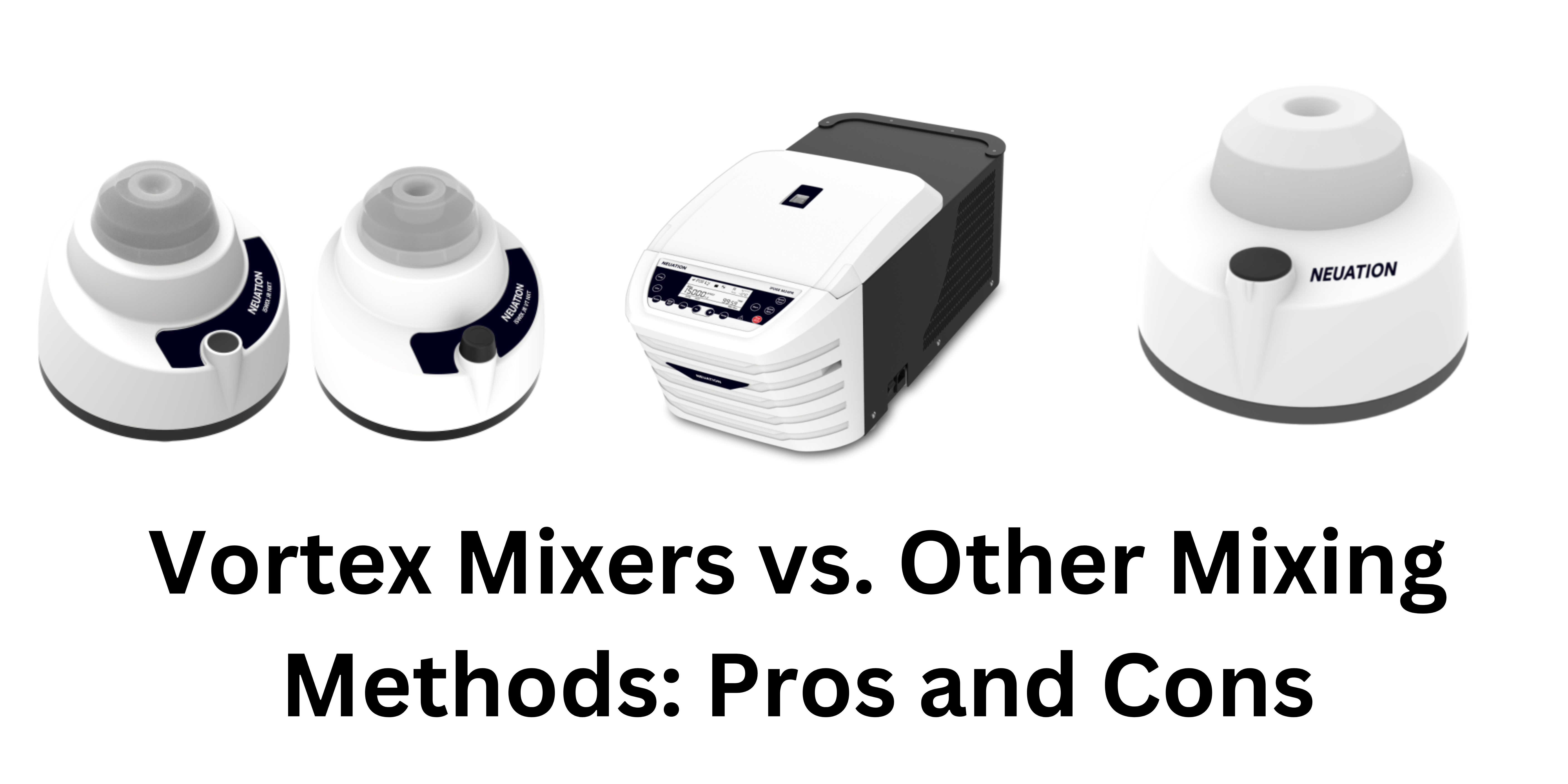Introduction
The appropriate procedure selection can have a big impact on an experiment’s dependability and success in the area of laboratory mixing. Vortex mixers are a well-liked option among the many available ones because of their quick mixing skills. To make a well-informed choice, it is necessary to take alternate mixing techniques into account. This article will examine the benefits and drawbacks of vortex mixers in comparison to other widely used mixing methods, guiding you through the complex world of laboratory mixing.
Vortex Mixers: A Quick Overview
The technique used by vortex mixers is straightforward but effective: rapid platform rotation creates a vortex, which causes liquid to travel. This technique is excellent for quickly combining small volumes, such as for preparing samples, reagents, or cell suspensions.
Comparing Other Mixing Techniques with Vortex Mixers
Stirrers with magnets
Pros:
Magnetic stirrers provide uniform mixing in bigger volumes, which is perfect for solutions that need to be homogeneous.
Stirrers offer continual mixing, which enables prolonged reactions or processes.
Cons:
Stirrers may not be ideal for extremely high-speed mixing, in contrast to vortex mixers.
Larger Volumes: Vortex mixers perform better in tiny volumes, while stirrers may struggle.
Stirrers that hover:
Pros:
High Viscosity: Overhead stirrers are more effective at handling high viscosity materials than vortex mixers.
For delicate reactions, stirring speed and torque can be accurately regulated.
Cons:
Bulkier Setup: Overhead stirrers frequently call for additional room and a special setup.
Slower Mixing: Overhead stirrers may mix more slowly than vortex mixers do.
Homogenizers:
Pros:
Strong Mixing: Homogenizers are able to thoroughly mix and break down even the most challenging samples.
Cell lysis: They are appropriate for techniques that disrupt and remove cells.
Cons:
Sample Integrity: In some circumstances, the strong homogenizers’ power can harm delicate samples.
Complexity: Due to its complex setup and operation, homogenizers call for appropriate training.
Baths using ultrasound:
Pros:
Non-Mechanical Mixing: Ultrasonic baths mix materials using sound waves, which is gentle on the samples.
Cleaning Ability: Applications for cleaning and degassing are also used for these baths.
Cons:
Limited Volumes: Ultrasonic baths may not be appropriate for mixing huge volumes.
Some samples are susceptible to variations in temperature brought on by ultrasonic energy.
Making a Decision: Alternative Method or Vortex Mixer
Your particular experimental needs will determine whether a vortex mixer is the best option among the many mixing techniques. Think about things like the nature of your samples, intended mixing speed, desired mixing volume, and viscosity. A vortex mixer excels when quick mixing of small amounts is your main requirement. However, examining alternatives can be more advantageous for greater volumes or specific reactions.
Conclusion: Mixing with accuracy
Vortex mixers are a useful tool in the lab because of how quickly and easily they operate. However, choosing between vortex mixers and other mixing techniques necessitates a full comprehension of your experimental objectives. You can confidently traverse the complex world of laboratory mixing by assessing the benefits and drawbacks of each strategy. This will help you produce accurate and consistent findings in each experiment.



